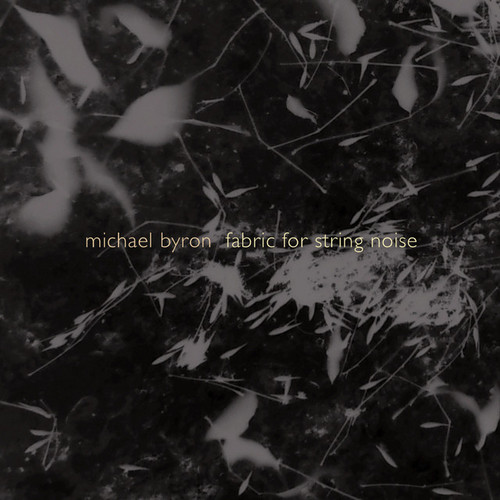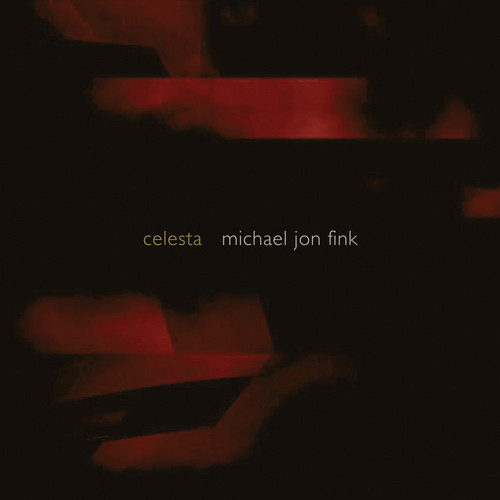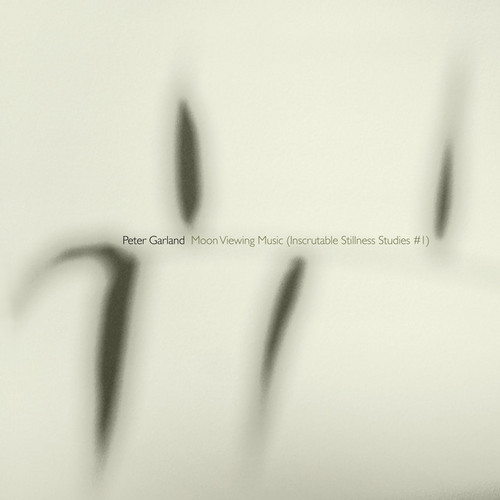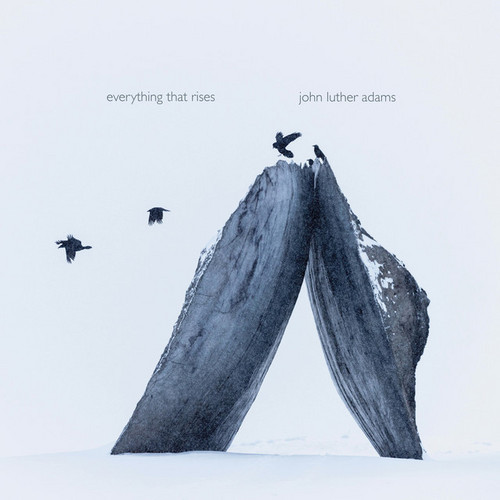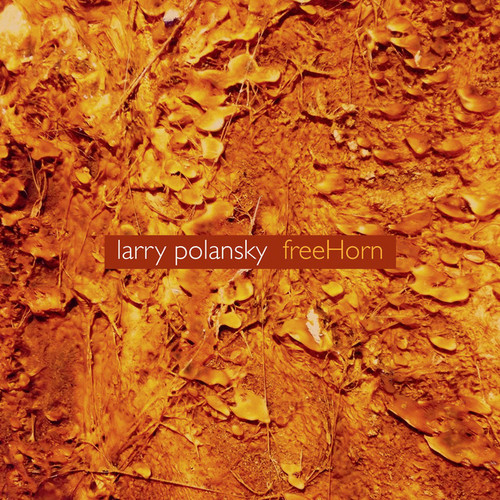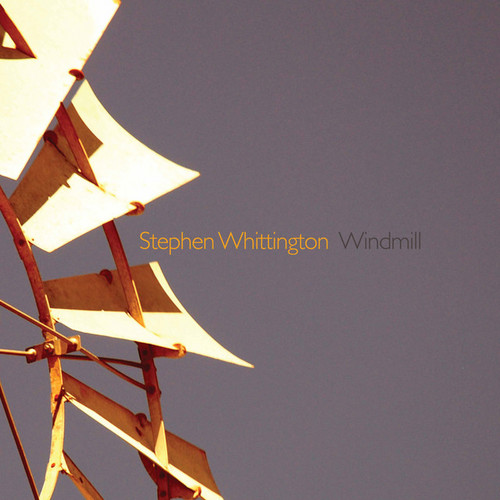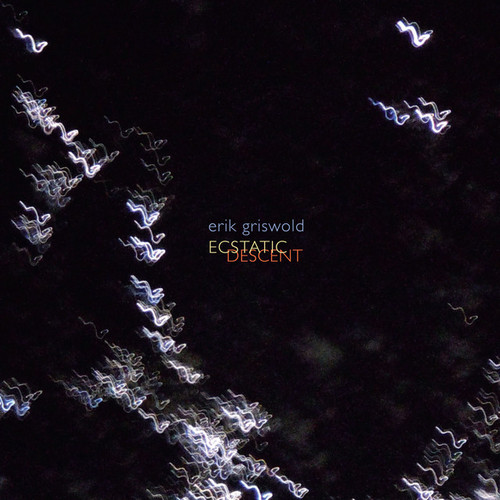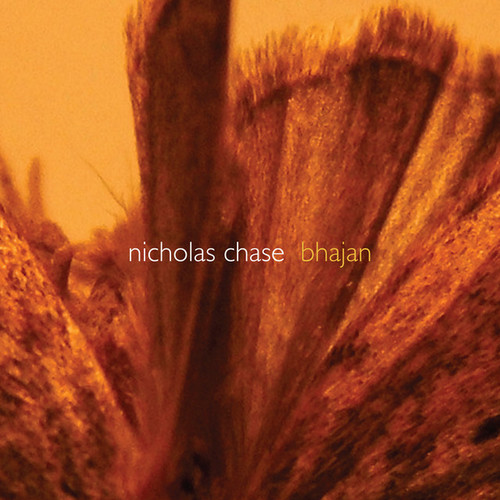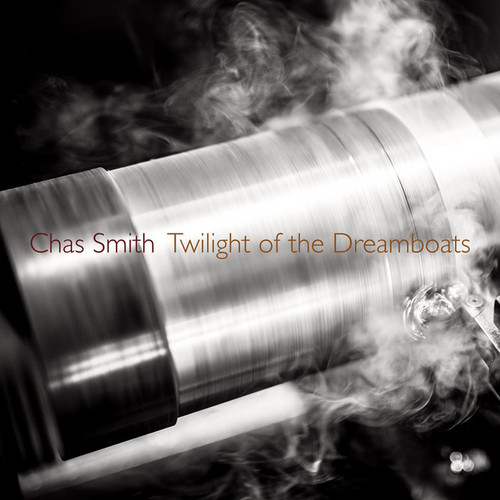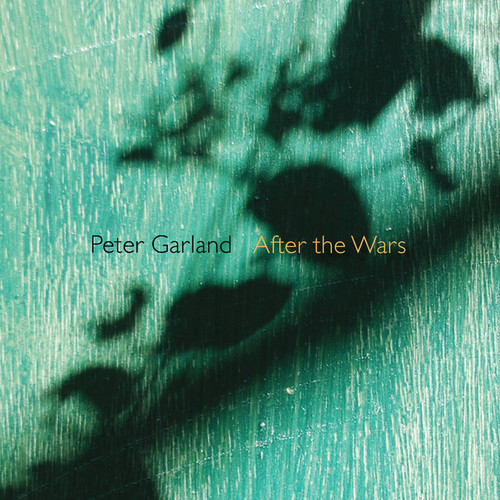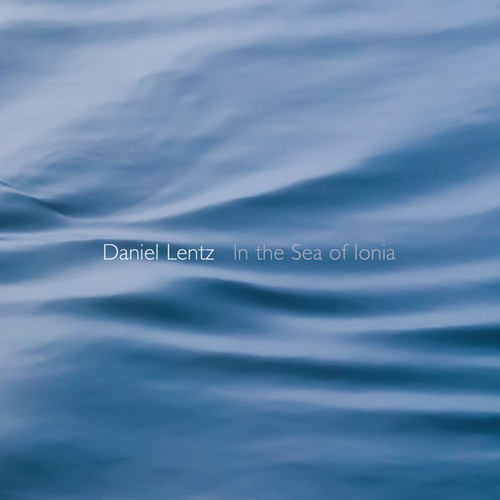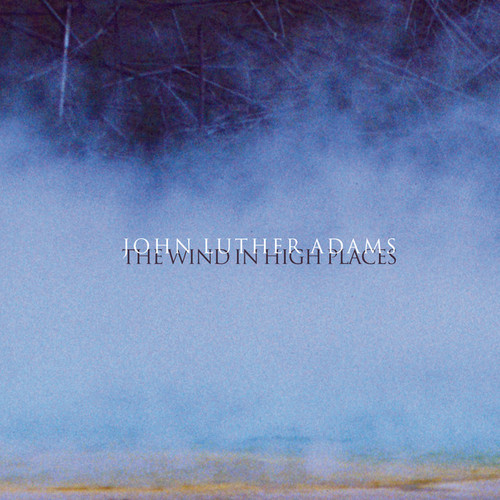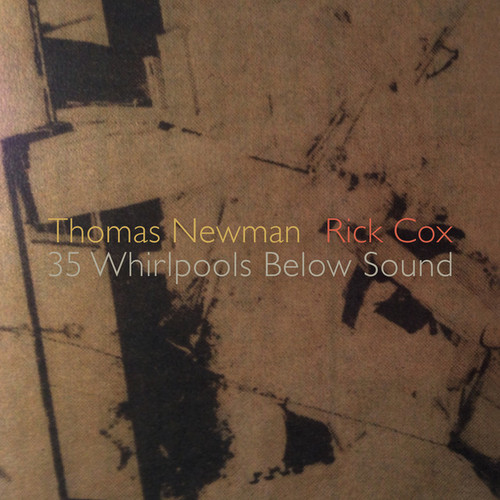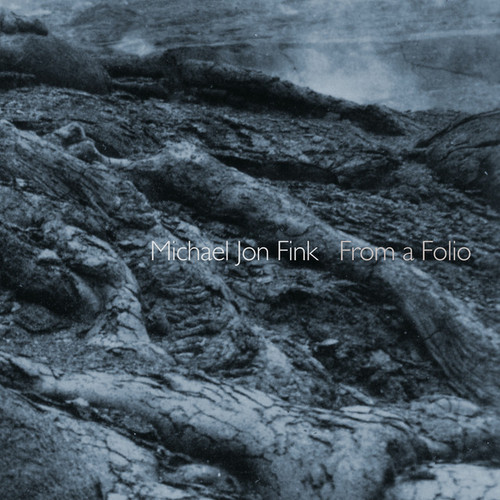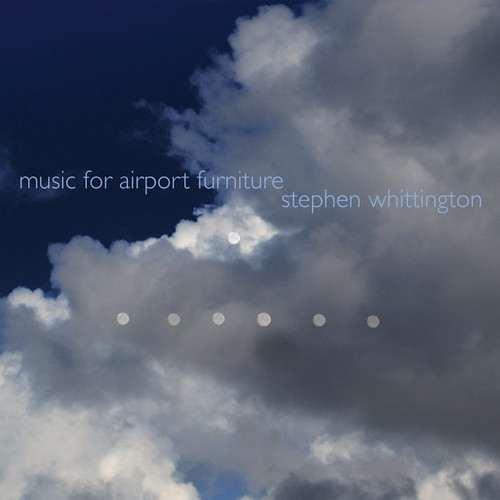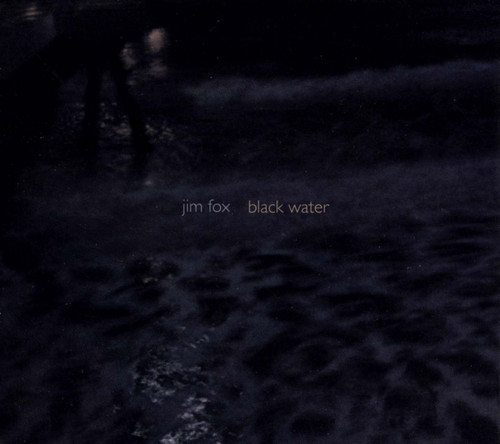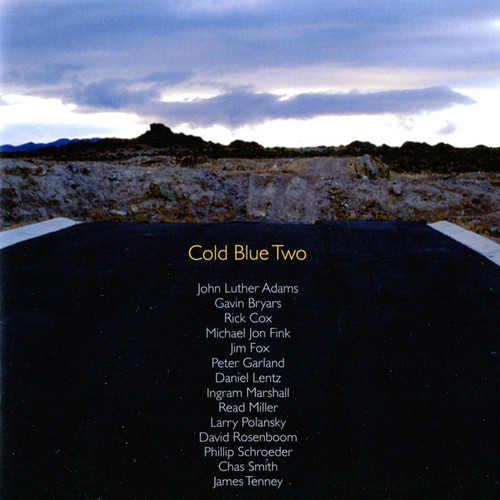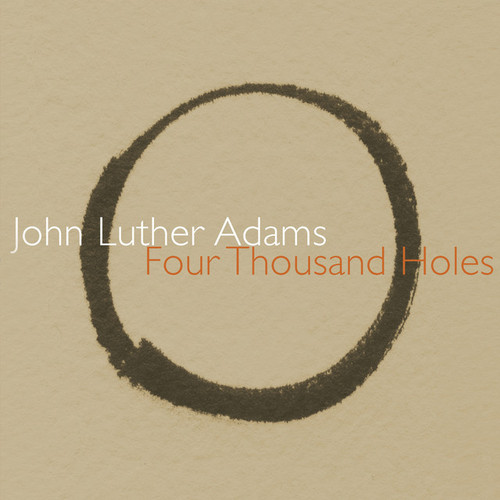★Cold Blue Music
Fabric for String Noise
Michael Byron's Fabric for String Noise, Parts 1 and 2 (2018), composed for New York’s notable violin duo String Noise, is wildly virtuosic music that is unlike just about anything else ever written for two violins. This two-movement work, a tremendous (and relentless) river of complex lines, may be said to resemble a sort of universal folk music of madly driven ecstasy, a sonic canvas wherein intense continuous activity shares space with an overarching sense of motionlessness.The composer chara…
Celesta
Michael Jon Fink's Celesta is a suite of a dozen quietly transcendent, gem-like celesta solos—a slowly unfolding ribbon of short pensive pieces composed over the past year and performed by the composer. The individual pieces, ranging in length from under two minutes to just over six minutes, are notable for the beautifully simple ways in which they reveal themselves through repetition and elegantly fashioned variation. The composer notes that these works “project a lyrical world of quiet intensi…
Moon Viewing Music (Inscrutable Stillness Studies #1)
Peter Garland's Moon Viewing Music (Inscrutable Stillness Studies #1) is a quiet, sparse, introspective six-movement work for three large gongs and a large tam-tam. Performed by celebrated new-music percussionist William Winant, it unfolds with a muted sensuality and a glacial inevitability—as if bent on suspending time. Each of the movements (or individual “pieces,” as the composer sometimes refers to them) has a distinct character, developing in its own fashion—utilizing such traditional means…
Everything That Rises
John Luther Adams's Everything That Rises, commissioned by SFJAZZ and the JACK Quartet, is an ever-in-motion virtuosic just-intonation work built of a series of 16 ascending musical “clouds.” Its pitches are derived from the harmonics of the piece’s subsonic fundamental tone (C0).The composer writes: “Everything That Rises, my fourth string quartet, grew out of Sila: The Breath of the World—a concert-length choral/orchestral work I composed on a rising series of 16 harmonic clouds. This music tr…
River of 1,000 Streams
Daniel Lentz's River of 1,000 Streams is a complex, slowly growing, densely textural piece for solo piano and up to 11 layers of “cascading echoes” (which are created in a live performance via a computer running a MAX patch). Each of the piece’s hundreds of “echoes” is a short moment (generally one to a few bars in length) of the piano solo that may reappear anywhere from a half-second to 25 minutes after the pianist first plays it. Floating sparsely amid the piece’s rich primary texture of trem…
freeHorn
The form of both freeHorn and ii-v-i consists of a continuous modulation between three different harmonic series. freeHorn weaves together the live interaction of acoustic instruments and computer software written by Larry Polansky and Phil Burk. ii-v-i, a reverberant cloud of moving intonation, gradually drifts from one natural harmonic series to another. Only open strings, 2nd, 3rd and 4th harmonics, and notes stopped at the 7th and 12th frets are used, and the guitars are audibly re-tuned fro…
Windmill
Stephen Whittington writes:“…from a thatched hut draws upon a particular strand of Chinese culture: the Chinese scholar who withdraws, temporarily or permanently, from society. The thatched hut was the place where the great Tang dynasty poets Du Fu (Tu Fu) and Li Bai (Li Po) withdrew from the world. Their example was followed by many others, including the poet Bai Juyi (Po Chu-I), author of Record of the Thatched Hut on Mount Lu, and Xia Gui, the Song dynasty painter of Twelve Views from a Thatc…
Ecstatic Descent
Erik Griswold's Ecstatic Descent is a prepared-piano work that melds composed and improvisational elements to create an intensely animated, one-of-a-kind textural sound world. Performed here by the composer, at times it may call to mind an enormous out-of-control music box or mechanical toy. It also readily lends itself to comparisons to various ever-changing (yet ever the same) natural sound phenomena, and has been likened by composer Annea Lockwood to the bubbling frequencies of a river.The co…
Bhajan
Nicholas Chase's Bhajan, described by one critic as “a pas de deux between violin and electronics,” is in four joined/continuous sections. Influenced by many musics from around the globe, the work tantalizes and bewitches the ear with a breadth of sounds that ebb and flow as if guided by an elusive but inherent sense of logic. The composer performs its electronics/computer part while noted violinist Robin Lorentz (who has appeared on four previous Cold Blue CDs) propels the music compellingly, i…
Twilight Of The Dreamboats
Chas Smith's Twilight of the Dreamboats, one of his quintessential electro-acoustic work, is an ever-evolving single gesture, a seamless blend of tones and timbres from his metal sound sculptures (instruments with such names as Bertoia 718, Que Lastas, lockheed, Mantis, Sceptre, DADO) and his homemade and hot-rodded steel guitars (Clinesmith, Emmons, Guitarzilla, Cadillac bass), performed by the composer. “Reaffirming its status as one of the most exciting innovations in the recording and market…
After the Wars
Peter Garland's After the Wars, a resonant, sometimes clangorous four-movement piano solo, displays a unique sense of grace and a sincerity of expression that is quintessentially Garlandesque. In some ways it marks a slight shift of focus from his more overtly melodic and rhythmically driven material of the past 30 years. Garland writes about the piece:“After the Wars was commissioned by pianist Sarah Cahill as part of her A Sweeter Music project. The idea (I believe) was to focus on the idea of…
In the Village of Hope
Michael Byron's In the Village of Hope is a restless (and in some ways relentless) virtuosic harp solo performed by Tasha Smith Godínez, who commissioned the work. This ever-changing, ever-churning, ever-developing music is unlike anything else in the solo harp repertoire, though not unlike some of Byron’s other recent work, such as his Book of Horizons for pianist Joseph Kubera.Byron writes about the music:“In the Village of Hope,” a purely sentimental title, was composed at the invitation of h…
In The Sea Of Ionia
In the Sea of Ionia is a wildly spinning, charismatically eclectic album containing four of Daniel Lentz’s recent piano works: (1) 51 Nocturnes (2011), a set of very short, contrasting nocturnes that are played without pauses, as one continuous work; (2) Pacific Coast Highway (2014), a primarily textural three-piano piece built of polyrhythmic layers of continuously shifting/drifting harmonies; (3) Dorchester Tropes (2008–09), a four-movement piano solo; (4) In the Sea of Ionia (2007–08) a piece…
The Wind In High Places
The Wind in High Places is an elegant, haunting collection album containing three of John Luther Adams’s serenely powerful recent string works: (1) The Wind in High Places (2011), a three-movement string quartet commissioned to celebrate the 50th anniversary of Theodore Front Musical Literature, performed by JACK Quartet; (2) Canticles of the Sky, a four-movement piece for four cello choirs, performed by the 48-member Northwestern University Cello Ensemble, directed and conducted by Hans Jørgen …
35 Whirlpools Below Sound
35 Whirlpools Below Sound presents a fantastical soundworld of 19 short, richly detailed, multilayered electro-acoustic soundscapes jointly composed by Thomas Newman and Rick Cox, whose musical friendship and ongoing working relationship date back to 1985. These enigmatic works, built of often mysterious juxtapositions of sounds, have been gestating and changing shape for many years, with ever an eye toward their eventual completion and release, which this CD marks. The album’s title was taken f…
From A Folio
Michael Jon Fink's From a Folio, a suite of six short pieces for cello and piano and one central piece for six cellos, a set of songs without words, was composed for new-music cellist Derek Stein, with whom Fink has been performing in various small groups during the past few years.As the elegant, subtle music unfolds, radiating a deep, emotional sense of form, the listener is quickly drawn into a highly nuanced, lyrical sound world. Fink’s characteristically reductive but expressive style is evi…
Music For Airport Furniture
Music for Airport Furniture is Cold Blue’s first release of Stephen Whittington’s refined, beautiful music. Whittington is something of a musical vagabond, traveling widely and writing music that is often multicultural in its inspiration. With this in mind, this compelling and sublime string quartet could be heard as a strange homage to the act of traveling, airport to airport.Stephen Whittington writes about the piece, “Music for Airport Furniture is a work for string quartet that alludes to Er…
Black Water
Jim Fox’s music is usually noted for its quietude and ambling pace. In the mid-1980s, however, he drifted from these defining stylistic penchants for a couple of years, penning music that often bounced along, energetically and loudly, at a good clip. His clangorous Black Water, from 1984, is rich with dense, sometimes shimmering, sometimes rumbling tremolos and loudly struck chords covering the full range of the piano, set off by brief moments of quiet, twinkling serenity.Jim Fox writes, “Black …
Cold Blue Two
Cold Blue Two is an eclectic anthology of 14 new, previously unrecorded works—many of them written specifically for this CD—by a diverse collection of composers whose personal musical visions usually blend intuition with process. The composers include both the well-known and the not-so-well-known, most with longtime associations with Cold Blue, and two making their first appearance on the label: John Luther Adams, Gavin Bryars, Rick Cox, Michael Jon Fink, Jim Fox, Peter Garland, Daniel Lentz, In…
Four Thousand Holes
Four Thousand Holes is a sometimes lush, sometimes fragile, rhythmically complex and technically demanding work for piano and mallet percussion (performed by the extraordinary pianist Stephen Drury and percussionist Scott Deal) and ghostly electronic “auras”—electronic sounds created by processing the acoustic instruments’ sonorities.Unlike John Luther Adams’s other works, the pitch material used in Four Thousand Holes is drawn exclusively from Western music’s most basic elements: major and mino…
